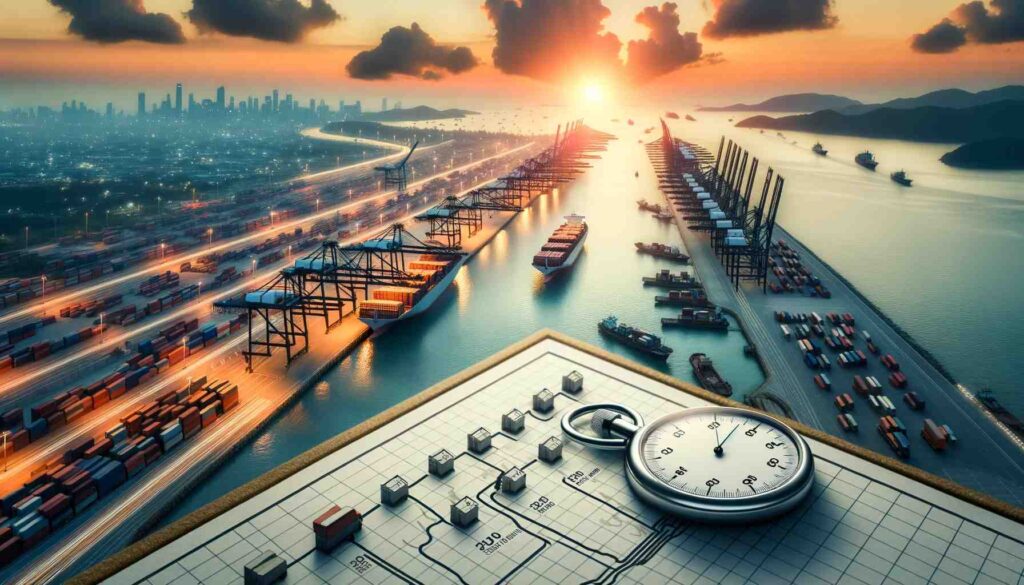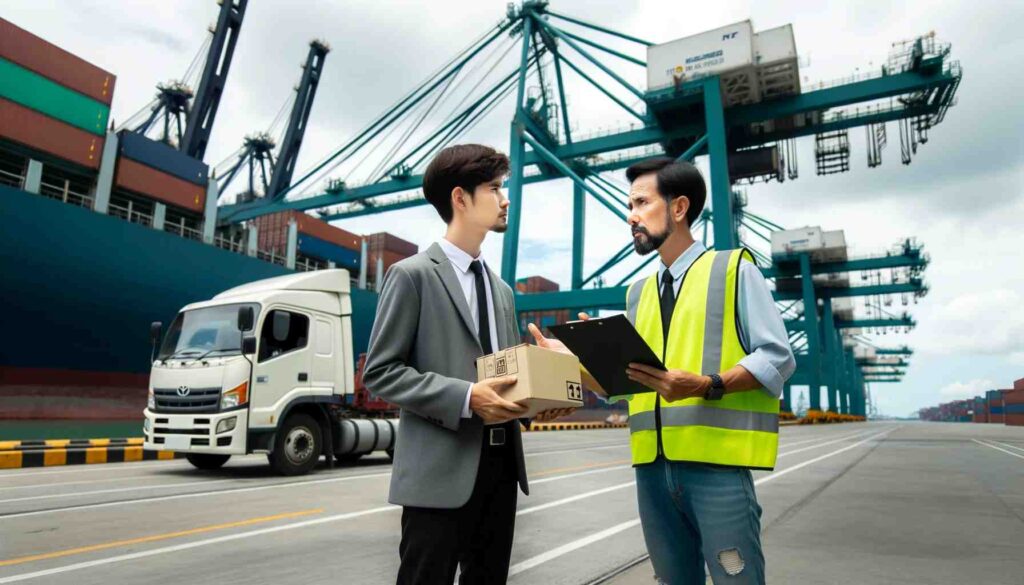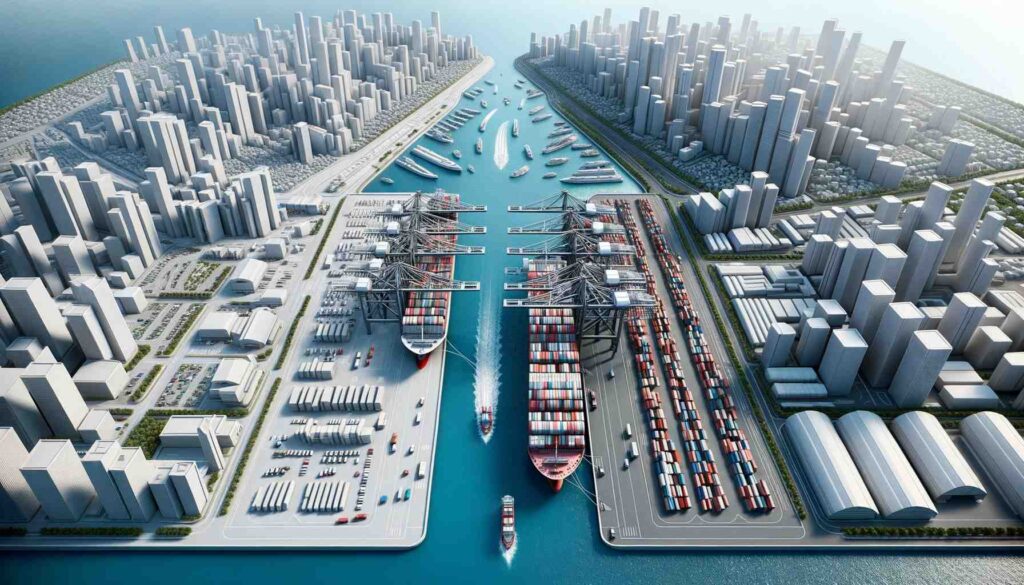Have you ever ordered something from abroad and noticed the “Port of Destination Arrival” tracking update? It’s a fancy term, but what’s it all about?
This update signals that your package has reached a significant point in travel. However, it’s essential to understand that this might not mean it’s in your country or even near your home.
It’s a big world, and international shipping has its own language. We will help you understand what this status means for your package.
So, if you’re curious about where your package is and what this update means, keep reading!

Key Takeaways:
- “Port of Destination Arrival” indicates a package has reached a major port but not necessarily its final destination.
- After this update, processes like customs clearance and sorting add to delivery time, potentially causing delays.
- Yanwen typically delivers within 2-4 weeks post-port arrival, with potential hold-ups due to various logistical challenges.
- “Port of Delivery” is where goods are offloaded for final delivery, differing from the broader “Port of Destination.”
Understanding Port of Destination Arrival
The port of destination (PoD) is the final destination for a ship or the end of sea transport for cargo. It is commonly used in Incoterms and is vital in logistics and shipping, marking the last step in maritime transport, often requiring customs and clearance procedures.
It’s the destination port for the cargo ship, but your package still has a journey by land to reach your location. Different packages might have various significant ports, like Italy or the Netherlands, as their “Port of Destination.”
So, this update simply means your shipment has completed its sea-bound transit, preparing for the next step– perhaps by road or air – before it finally reaches your hands.
What happens after the Port of Destination Arrival update?
Following this notification, several essential steps occur before your package resumes. Initially, if the port is a transshipment hub, the shipment might be transferred onto another cargo vessel.
This means your package might start on another sea journey before it transitions to land. However, if the port marks the end of the sea journey, customs clearance becomes the next crucial step.
Here, your package undergoes inspection, ensuring it adheres to import regulations. Once cleared, it’s handed over to a carrier responsible for transportation, either by road or air.
Remember that the duration between the update and the next movement can vary. It depends on factors like port efficiency, carrier schedules, and customs processing speed.
But once all is set, your package will inch closer to its final destination. It’s essential to remain patient, as it may take several days before your package’s status is updated again.
Also, Read: What Does Outbound in Sorting Center Mean
How long does it take for packages to arrive at their destination from the port?

You might wonder about the duration required for your package to reach its final destination. The answer isn’t straightforward, as several factors come into play.
The package must clear customs, and this time can vary based on regulations, paperwork, and any inspections.
After clearance, carrier pickup schedules play a role; the package might wait for scheduled pickups, which can add some time.
The distance between the port and the ultimate address can significantly impact delivery time. A package destined for a nearby city might arrive within a day or two, while those heading to distant regions may take longer.
The mode of transportation — whether by truck, rail, or even domestic flight—also dictates the timeframe. And let’s not forget potential logistical issues, like road conditions, weather disruptions, and carrier capacity, which can occasionally introduce delays.
For most packages transitioning from significant ports to urban areas, 3-7 days is typical. However, it might extend a bit further for remote areas or during peak shipping times. Always stay informed by tracking your package regularly to track its progress.
Also, Read: What does shipment at the local distribution center mean
How does Yanwen handle the “Port of Destination Arrival” update?
When Yanwen’s tracking system marks this update, it signifies the shipment’s arrival at the intended seaport. It’s essential to grasp that this doesn’t always equate to the final destination country. For instance, a shipment heading to Croatia might first land in Piraeus, Greece.
Post this update, Yanwen coordinates with local carriers or freight forwarders, streamlining the journey beyond the port. This coordination ensures the parcel smoothly transitions from sea-bound transit to land-based movements. The subsequent steps, like customs clearance and transport to sorting hubs, follow in collaboration with these local entities.
The estimated delivery duration for Yanwen, from the port to the final destination, ranges between 2 to 4 weeks. This partnership and coordination keep Yanwen’s operations efficient despite being a budget shipping choice.
Also, Read: What Does Handed Over to Forwarding Agent for Transit Mean
What to do if a package gets stuck at the port of destination?

After receiving this update, it’s normal to anticipate the next movement of your package—however, sometimes the progress stalls, leading to understandable worry.
From our previous understanding of how international shipping, especially with carriers like Yanwen, operates, here are steps to undertake if your package seems stuck:
Buyer’s Guarantee Period:
Many platforms, like AliExpress, have a buyer guarantee period (often 60 days). If your package doesn’t arrive within this timeframe, you can usually take further action or open a dispute.
Universal Tracking:
Consider using tracking tools like 17track or Parcels App to gain a clearer picture. They can sometimes identify updates not apparent in primary tracking, especially during congested periods.
Customs Considerations:
Occasionally, packages face delays during customs inspections or due to paperwork issues. Ensure you’re responsive to any notifications or requirements from customs authorities.
Shipping Backlogs:
These are significant delays in transporting goods, often resulting from accumulating unshipped or undelivered goods. Whether due to labor shortages, operational hiccups, or increased package volumes, these backlogs can create a hard time for shipping facilities, causing your package to be held up.
Port Congestion:
This occurs when there’s an overload of vessels waiting to dock and unload their goods at a port. With the global e-commerce and trade surge, many ports often operate at or near capacity. This congestion can cause considerable delays, as ships might be anchored for days or even weeks before they get a spot to dock.
Also, Read: What Does Received by Local Delivery Company Mean AliExpress
What is the difference between a port of delivery and a port of destination?

The shipping world can sometimes be confusing, especially with similar terms but distinct meanings. “Port of Delivery” and “Port of Destination” are two such terms. Let’s discuss the differences.
Port of Destination:
This term refers to the port where a cargo ship is scheduled to unload its goods. It’s the intended final port for a vessel’s journey, even if it’s not the ultimate destination for all the cargo on board. For instance, goods might be offloaded in a major port in Greece, even if their final destination is a smaller town in Croatia.
Port of Delivery:
This is the port where the cargo is offloaded and delivered to its final recipient or address. It emphasizes the point where the cargo is handed over for its final leg, which might be via road, rail, or another form of transport.
Using the earlier example, while Greece might be the port of destination, the port of delivery could be a local depot in Croatia from where the goods are dispatched to the final address.
To simplify, think of the port of destination as the “major station” where goods arrive and the port of delivery as the “specific exit point” for goods headed to their final spot.
Also, Read: What does Dispatched from Sorting Center mean?
FAQs
Does the Port of Destination Arrival indicate that a package has cleared customs?
Yes, this status means that your package has arrived at the port of entry in the destination country and has cleared customs. This means that your package is now ready to be delivered to you.
Where is the port of destination arrival?
This status means it is the port of entry in the destination country where your package will be processed and cleared by customs. The specific destination port will vary depending on the shipping route used.
What does the port of destination mean when tracking a package?
“Port of Destination” is a tracking status that indicates that your package has arrived at the port of entry in the destination country. This means that your package is in the process of being cleared by customs and will be ready for delivery soon.
What is an example of a port of destination?
Ports of destination are the ports where packages arrive in the destination country, such as Los Angeles, New York City, London, Shanghai, and Tokyo.
Final Thoughts
Shipping can be confusing. But remember, when you hear this status, it means your package has reached a big port, but it might not be near its final stop yet. Things like checking packages at customs, moving them around, or busy ports can slow things down.
A company like Yanwen usually takes 2-4 more weeks to get to you after the package reaches the port. If there’s a delay, just hang tight and remember there’s a time frame for complaints.
And don’t mix up ‘port of destination’ with ‘port of delivery.’ Knowing these things can make waiting a bit easier. It’s all about patience and knowing the process.

